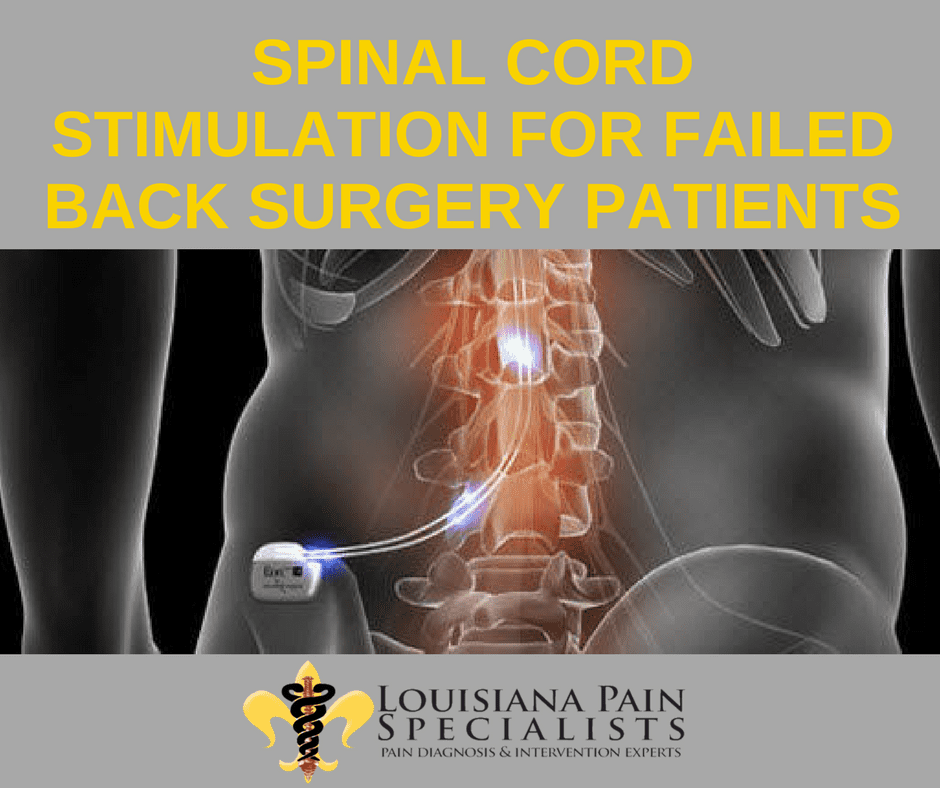
Have you or someone you love had back surgery, and then ended up with failed back surgery syndrome?
Failed back surgery syndrome is a term that’s used to describe patients who did not see any pain relief after having back surgery.
In these cases, there are other options patients can try. One of them is spinal cord stimulation.
What is spinal cord stimulation?
Spinal cord stimulation involves a doctor surgically implanting a device under your skin. The device sends a mild electric current to your spinal cord. When the device is turned on, it stimulates the nerves in the area where you’re feeling pain.
Unlike most surgeries, spinal cord stimulation therapy can be reversed if a person decides it is ineffective or he or she doesn’t want to do it anymore. The implant can be removed without any permanent alterations to your spine.
What are the advantages of spinal cord stimulation?
- Varied levels of pain relief – One key plus to spinal cord stimulation is that the patient has a hand-held controller that adjusts when and how much stimulation to send to the nerves. Some newer models even adjust automatically based on the patient’s movements. That’s a welcome thought for people who live with chronic pain.
- Minimally invasive procedures – Most of the time, it only takes one incision to get the device into your body. The smaller the device, the smaller the incision. The electrodes are generally given with a hollow needle, and there are very few side effects involved with spinal cord stimulations. Did we mention that if you don’t like it, you can have it removed?
- Less dependency on opioids – There’s an opioid epidemic in the United States, and as doctors are under pressure to prescribe less pain medication, spinal cord stimulation can step up to fill the void in a big way. Patients who experience pain relief with spinal cord stimulation often end up taking less pain pills, which decreases your chances of becoming dependent on them.
- Pain relief that’s targeted – If you take a pain pill, its effects are on the entire body and don’t necessarily focus on the one and only area where you are experiencing pain. Spinal cord stimulation, on the other hand, only relieves pain in the areas where you are feeling it.
- Few to no side effects – Pain medications often come with serious side effects, including drowsiness, constipation and the risk of becoming addicted. Spinal cord stimulation does not come with those side effects.
- It is cost-effective – Research has shown that the cost of having spinal cord stimulation therapy is comparable to other pain therapy alternatives, including non-surgical therapies.
- No refills at the pharmacy or repeated trips to the doctor – The pain relief patients get from spinal cord stimulation can go on for years, and patients don’t have to wait in line at the pharmacy for pills or see their doctor every week.
Are you or someone you love suffering from chronic back pain? Did you have back surgery, but aren’t feeling any relief? Contact Louisiana Pain Specialists today for help.
